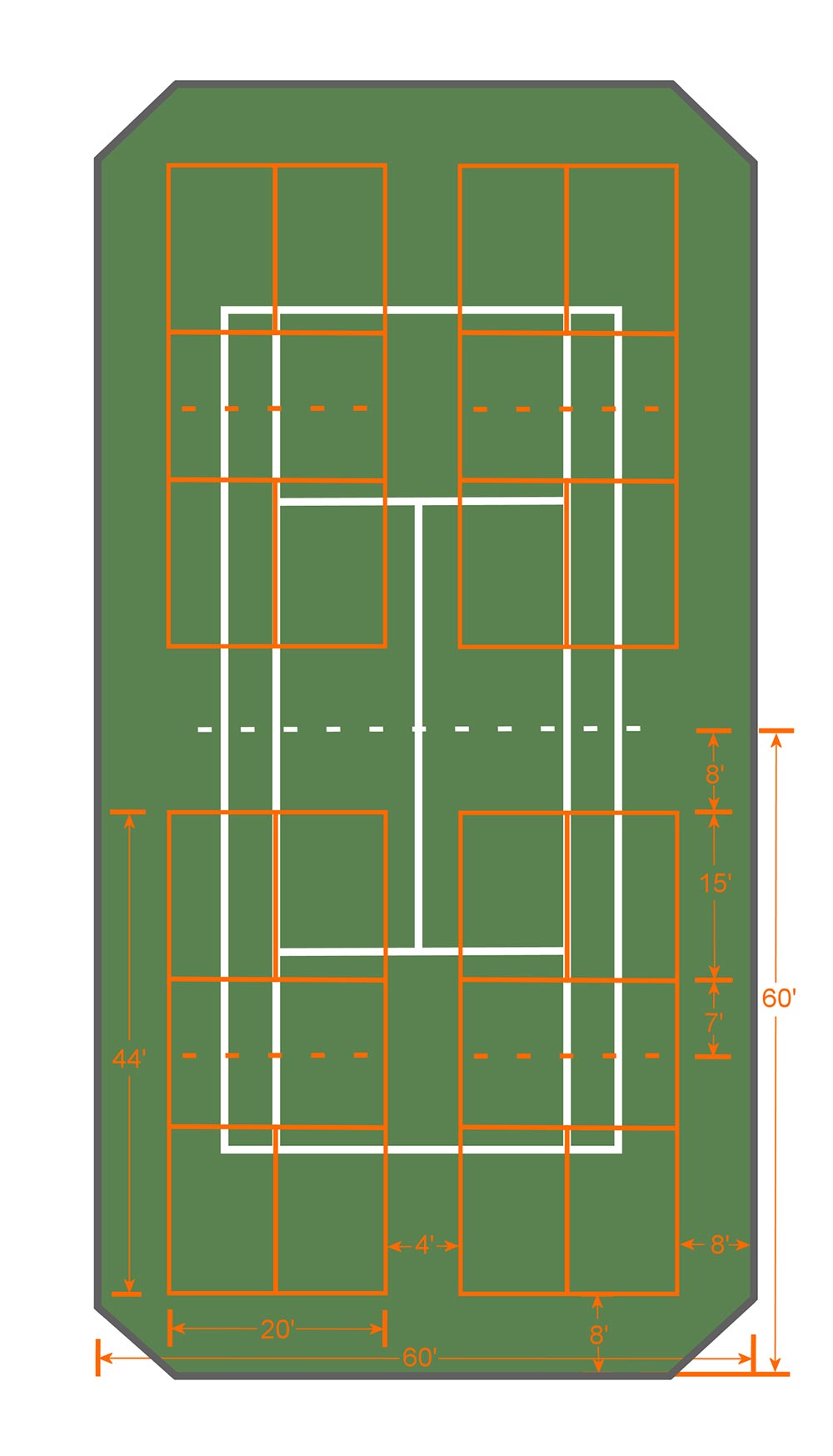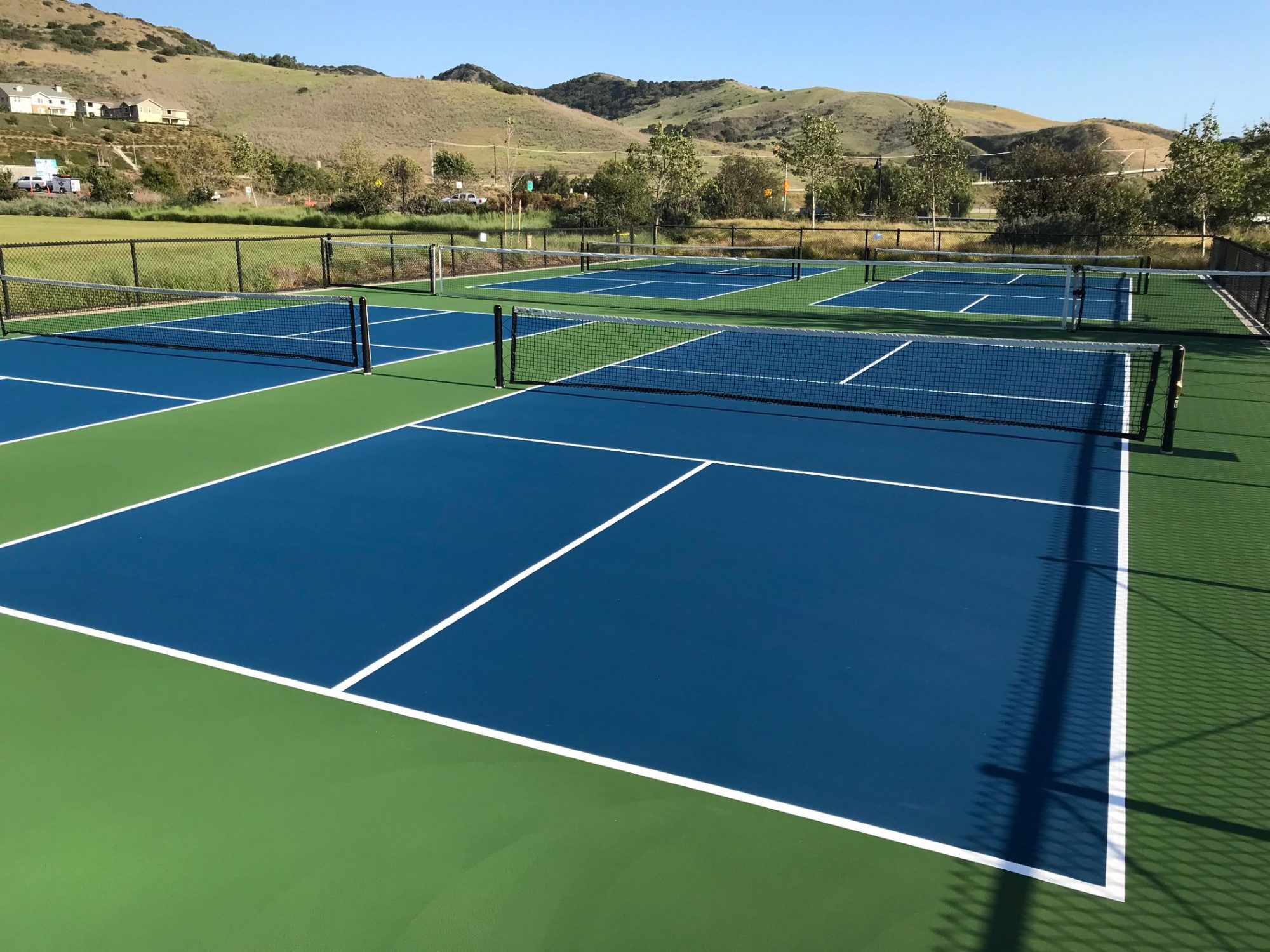Why Illinois and Midwest Are Picking Us for Pickleball Courts Design & Building
Why Illinois and Midwest Are Picking Us for Pickleball Courts Design & Building
Blog Article
Trick Aspects in the Building And Construction of Pickleball Courts: From Site Option to Last Coatings
The construction of pickleball courts incorporates a variety of vital factors, beginning with the selection of an appropriate website that balances availability with ecological considerations. Crucial elements such as court measurements, surface area materials, and drain systems significantly influence not just the high quality of play but additionally the longevity of the facility.
Website Choice Criteria
When starting the building and construction of pickleball courts, it is vital to toenail down the site choice requirements that will certainly guarantee optimal playability and ease of access. The place must be quickly obtainable for players, ideally positioned near domestic areas or neighborhood centers, to encourage engagement.
Additionally, the terrain ought to be degree and steady, as uneven ground can bring about safety dangers and influence gameplay. Ample water drainage is additionally essential; selecting a website with good water drainage will assist maintain court conditions throughout negative weather.
An additional crucial consideration is the availability of energies. Accessibility to electrical energy and water is required for lighting and upkeep functions. Furthermore, proximity to car park facilities is crucial, helping with very easy accessibility for players and spectators alike.
Environmental variables can not be overlooked; all-natural shade from trees can improve gamer comfort, while direct exposure to dominating winds might disrupt play. Finally, zoning policies and area assistance must be considered to make certain that the task straightens with local guidelines and gets the support it requires for successful execution. By carefully evaluating these standards, stakeholders can produce a welcoming and practical setting for pickleball enthusiasts.
Court Dimensions and Design
To ensure optimal gameplay and adherence to guidelines, the measurements and design of pickleball courts should be very carefully defined. A conventional pickleball court determines 20 feet in size and 44 feet in size for both singles and doubles play. The advised design includes a non-volley zone, generally described as the "kitchen," extending 7 feet from the web on either side. This location is critical, as it affects player positioning and shot option - Illinois and midwest.
The internet elevation is evaluated 36 inches at the sidelines and 34 inches at the facility, producing a small dip that influences round trajectory. Court markings are similarly crucial; lines need to be 2 inches wide and unique in shade to make certain presence.
Additionally, a buffer zone bordering the court is advisable, normally extending 5 to 10 feet beyond the sidelines and baselines to suit players' activities and improve safety and security. Appropriate layout and dimensions not only guarantee compliance with official policies however also boost the overall having fun experience, fitting both entertainment and affordable play. Cautious preparation in these areas is critical to the successful construction of pickleball courts.
Surface Product Options
Selecting the right surface area material for pickleball courts is critical for making certain optimal player performance and safety. The selection of surface can considerably affect gameplay, consisting of sphere bounce, traction, and gamer convenience.
There are several options available, each with its unique qualities. Asphalt is a prominent selection due to its sturdiness and reduced upkeep requirements. It offers a strong having fun surface area that can stand up to different weather problems however might require periodic resurfacing.
Concrete is one more widely utilized material, using exceptional long life and a smooth surface. It permits consistent ball bounce however can be hard on gamers' joints, making it much less desirable for long-lasting play without proper cushioning.
For those seeking improved convenience and shock absorption, supported acrylic surfaces present a viable option. These surface areas incorporate a base layer with an acrylic topcoat, supplying improved grip and a softer feeling, which is advantageous for lowering the danger of injuries.
Lastly, artificial turf is obtaining grip, specifically for multi-purpose facilities. Its adaptability and lower upkeep requires make it an appealing alternative, though it may not supply the same round reaction as standard difficult courts. Careful consideration of these alternatives will certainly make certain review an ideal playing atmosphere.
Drain and Lights Considerations
Proper drainage and efficient lighting are essential components in the building and construction of pickleball courts, significantly affecting both playability and safety. Ample drainage systems avoid water buildup, which can result in slippery surfaces and damages to the court framework. A well-designed water drainage plan includes sloped surfaces and suitable products try this out to assist in water move far from the playing location - Illinois and midwest. This not only protects the stability of the court however additionally reduces downtime as a result of inadequate climate condition.
Lighting is just as crucial, particularly for courts meant for evening usage. The positioning of lights components should be purposefully intended to get rid of shadows and offer even circulation of light across the court.

Final Finishes and Upkeep
After resolving water drainage and illumination considerations, attention transforms to the last surfaces and recurring upkeep of pickleball courts. Illinois and midwest. The choice of surface area product is critical, as it influences both playability and sturdiness. Common choices include acrylic finishes and specialized sports surfaces that provide optimal grip and padding. These finishes ought to be used in numerous layers to ensure durability against weather condition components and use.

Seasonal maintenance may consist of resurfacing every couple of years, depending upon usage and ecological factors. Correctly maintaining webs, court lines, and surrounding locations is equally important to provide a risk-free and delightful having fun experience. By investing in quality finishes and sticking to a structured maintenance schedule, facility owners can ensure check their pickleball courts continue to be in excellent problem for years to come.
Final Thought
To conclude, the effective building and construction of pickleball courts rests on precise focus to a number of key elements. Site option should prioritize availability and surface security, while court dimensions and design should follow optimal requirements for gameplay. The selection of surface area material considerably influences player safety and security and performance. Effective drainage and sufficient lighting contribute to court long life and visibility. Lastly, top quality finishes and a robust upkeep schedule are essential for protecting the court's condition, enhancing the total experience for gamers and viewers alike.
Report this page